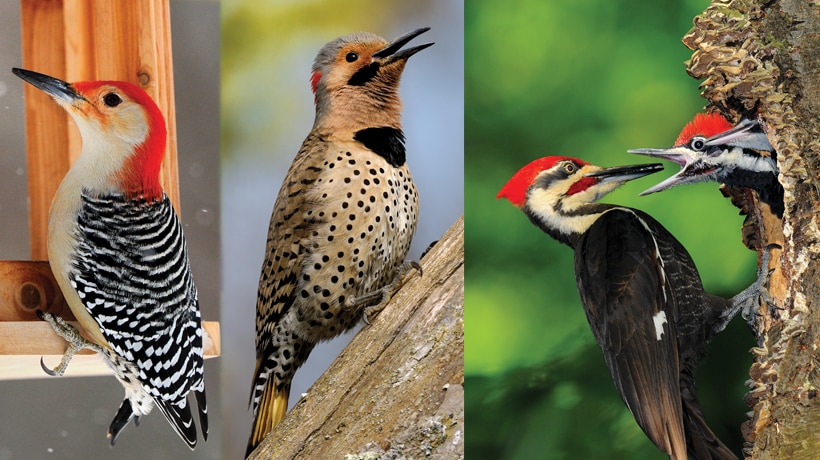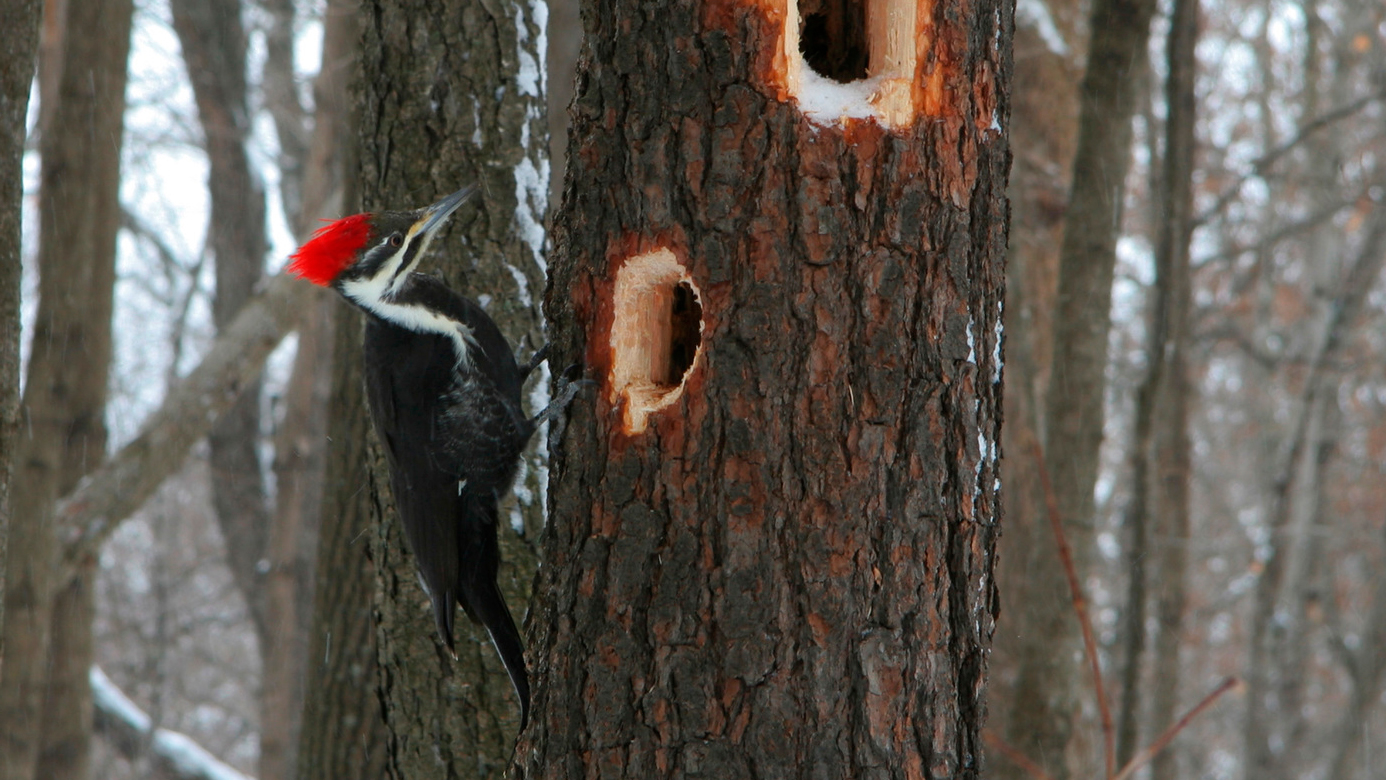Woodpeckers in Florida: Recognition Tips and Habitat Preferences
Woodpeckers in Florida: Recognition Tips and Habitat Preferences
Blog Article
Woodpeckers Unleashed: Exploring the Wonders of These Competent Tree Climbers
Woodpeckers, with their unique markings and rhythmic drumming echoing with wooded locations, hold a distinct area in the avian globe - Woodpeckers in Florida. As we dive into the elaborate information of woodpeckers' nesting habits, feeding strategies, and the ongoing preservation efforts to safeguard these amazing birds, a much deeper appreciation for their place in nature unfolds.
Composition and Adaptations
When analyzing the composition and adaptations of woodpeckers, one can observe exceptional attributes that enable these birds to thrive in their specialized environmental particular niche. Woodpeckers are equipped with a suite of unique anatomical attributes that assist them in their woodpecking behavior. One of the most prominent features is their strong, chisel-like beak, which is specialized for boring right into timber to reveal pests or develop nesting cavities. This beak is supported by solid neck muscles and a very established head framework that serves as a shock absorber, enabling woodpeckers to repetitively eat trees without causing brain injury. Additionally, woodpeckers have zygodactyl feet, with 2 toes encountering onward and 2 facing backward, providing a company grasp on tree trunks while they look for food or drum for interaction.
Additionally, woodpeckers have a special tongue structure that is long, barbed, and sticky, allowing them to draw out insects from crevices in timber. This specific adaptation permits woodpeckers to make use of a food source that is hard to reach to several various other bird species. On the whole, the composition and adaptations of woodpeckers display the remarkable transformative options that have permitted these birds to thrive in their arboreal habitat.
Drumming Habits
Having checked out the composition and adjustments of woodpeckers, the emphasis now changes to recognizing their drumming habits, a distinctive aspect of their interaction and territorial screens. Drumming is a vital kind of communication among woodpeckers, serving several objectives such as establishing territories, attracting companions, and signaling alarm. Each woodpecker varieties has a distinct drumming pattern that assists people recognize members of their own types and identify them from competitors or predators.
Woodpeckers create drumming sounds by rapidly pecking on powerful surfaces such as dead trees, energy posts, or also metal objects, creating a series of rhythmic beats. The strength and speed of drumming can differ based on the purpose; for circumstances, a quick drumming sequence might symbolize aggressiveness towards trespassers, while a find this slower and softer drumming pattern can indicate courtship (Woodpeckers in Florida). Furthermore, woodpeckers may readjust the frequency and period of their drumming to convey particular messages properly
Nesting Habits
Exploring the nesting behaviors of woodpeckers exposes fascinating insights into their reproductive behaviors and habitat options. Woodpeckers are known for their unique nesting preferences, usually excavating dental caries in trees to create protected spaces for raising their young. These cavities offer not just as a nesting site but likewise as a safe and secure haven from predators and inclement weather.
Woodpeckers exhibit a high level of integrity to their nesting sites, typically going back to the exact same place every year. This behavior highlights the importance of appropriate environment schedule for their reproductive success. The option of a nesting website is vital for woodpeckers, with elements such as tree types, height, and decay phase playing considerable roles in their decision-making process.
Interestingly, some woodpecker varieties are understood to dig deep into numerous dental caries within their region, giving themselves with different nesting choices. This method may offer as a kind of insurance against potential risks or disturbances to their key nesting website.

Feeding Strategies
One of the most distinctive feeding behaviors of woodpeckers click here for more info is drumming, which involves rapid pecking on trees to discover pests under the bark. Woodpeckers are also recognized to excavate cavities in trees to gain access to hidden insect larvae or sap. Some types, like the acorn woodpecker, shop nuts in specially developed holes called granaries.
Preservation Initiatives
In the middle of the elaborate feeding methods exhibited by woodpeckers, the conservation initiatives aimed at protecting these remarkable birds play an essential duty in preserving their environments and populaces. Woodpeckers encounter various risks to their survival, including environment loss as a result of deforestation, environment adjustment altering their environments, and collisions with synthetic frameworks such as buildings and cars - Woodpeckers in Florida. Guardians are proactively functioning to address these obstacles and make certain the long-term well-being of woodpecker species

Education and public recognition campaigns are also crucial elements of woodpecker preservation initiatives. By raising understanding concerning the value of these birds in preserving healthy woodland communities, conservationists can garner support for environment conservation campaigns and promote accountable land monitoring techniques. With collaborative efforts in between researchers, policymakers, and neighborhood communities, we can work together to safeguard a future where woodpeckers thrive in their all-natural environments.
Conclusion

Report this page